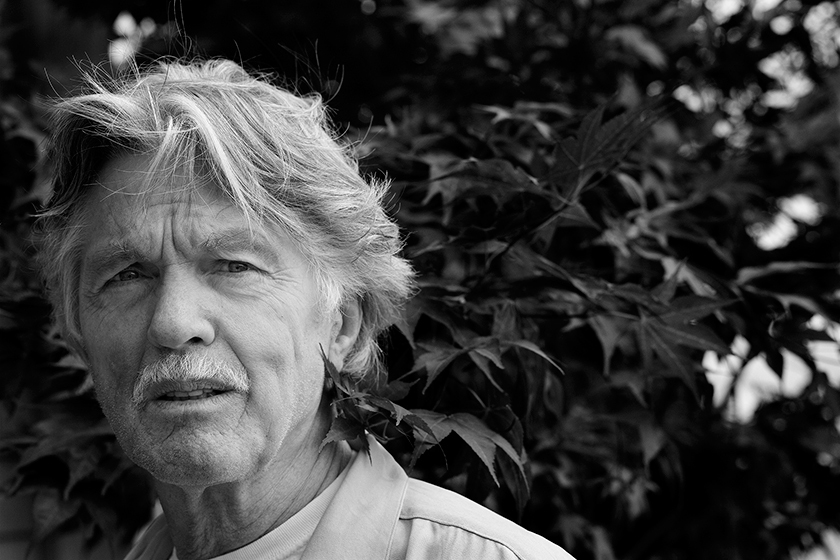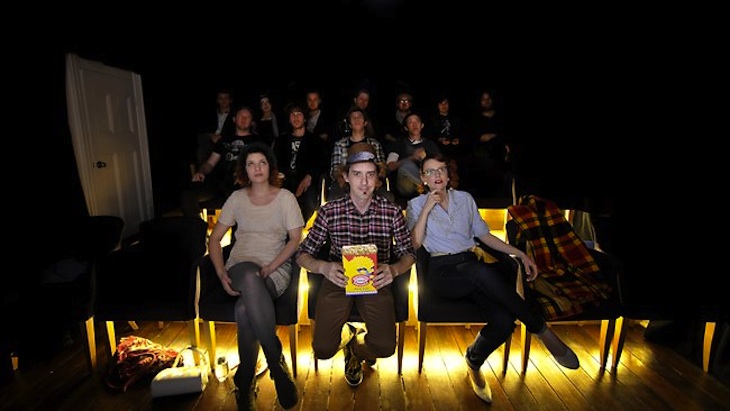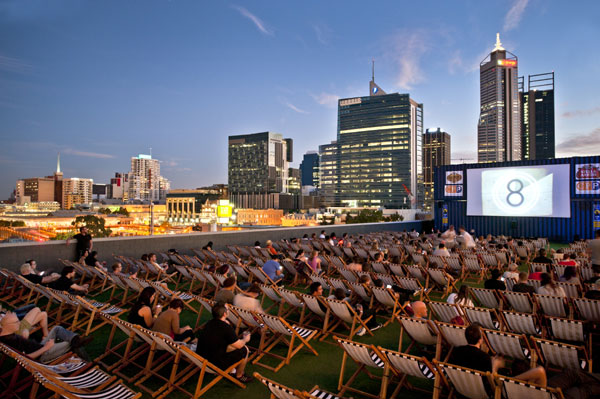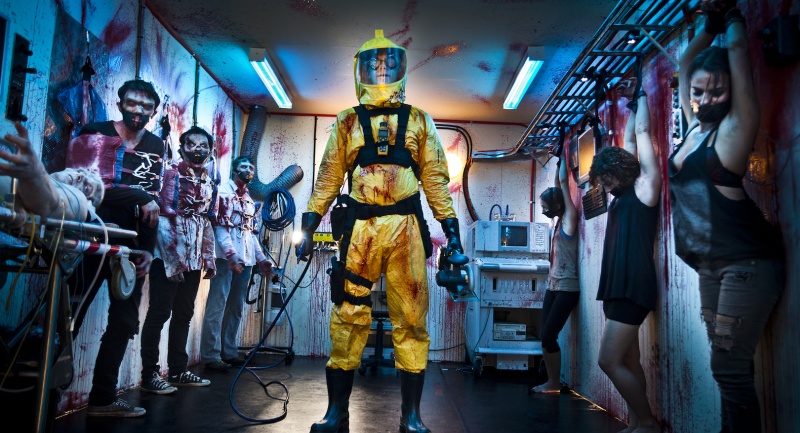Australian soap-opera fans fondly remember Kimberly Joseph, the radiant young actress who won the nation’s heart in the popular series Home and Away and All Saints. But her starlet days are a distant memory for the LA-based Australian-Canadian; despite acting in such hits as Cold Feet and Lost, for most of the last decade she has shared production duties with Adam Schomer on her passion project, The Polygon. This heartbreaking documentary captures the hardships and humanity of a Kazakh village called Sarzahl, located a mere 18 kilometres from what was once the largest nuclear test site on Russian soil. Having recently attended its World Premiere at the 2014 Gold Coast Film Festival, the debutant director spoke to SCREEN-SPACE about her many visits to the region, the villagers she has grown close to (pictured, below; Joseph, far right) and the fate of an irradiated landscape that a cash-rich government refuses to tend to….

The fateful nature of your involvement with the Semipalatinsk region in Kazakhstan began with a chance meeting on a plane with Scottish MP Struan Stevenson (pictured, below). What do you recall of that first meeting, over ten years ago?
 He spoke with such passion about the conditions these people lived in and I was moved so much, I said let me know if there is anything I can do to help. A few months later I was on the ground in Kazakhstan. There are so many humanitarian issues, so many people suffering in the world, I’ve been asked why focus in on this and my answer is that it came about very organically, that I was pointed in this direction by chance. Having met the villagers first hand, I knew I had to do more for them. That began with a photographic exhibition in Scotland in 2004 then New York City in 2007 to raise money.* The villagers (are) convinced that he was instrumental in raising the awareness needed to help them.
He spoke with such passion about the conditions these people lived in and I was moved so much, I said let me know if there is anything I can do to help. A few months later I was on the ground in Kazakhstan. There are so many humanitarian issues, so many people suffering in the world, I’ve been asked why focus in on this and my answer is that it came about very organically, that I was pointed in this direction by chance. Having met the villagers first hand, I knew I had to do more for them. That began with a photographic exhibition in Scotland in 2004 then New York City in 2007 to raise money.* The villagers (are) convinced that he was instrumental in raising the awareness needed to help them.
You travelled back and forth to the region over the course of the production, but can you recall your first impression of the landscape and the people?
They were initially nervous about telling their stories but they really needed to. They hadn’t had the opportunity to do that. These people are very well-read, very proud people. They are living in villages that have not been improved since the Soviets left; roads have not been maintained, access to clean water is scarce. There is very little trade in the area, just a couple of shops that sell potatoes and rice; they exist on the small income they make off their livestock. It is truly remote.
How did the ruling Kazakhstan government treat your presence?
 When we travelled through the region, a local government official accompanied us. And the villagers were livid that this man had never been out to see them, which I found very upsetting. The people had lost children and grandchildren; generations had been affected by the test site and they had gotten no attention from this man or his government. The country uses the closure of The Polygon as a drawcard, proud of their relinquishing of the nuclear arsenal. It should be noted that it was the previous Soviet regime that detonated the weapon, not the independent Kazakh state. But while (the new leaders) admit that these villagers have been affected and acknowledge high cancer rates and other effects with some very carefully worded press releases, they are doing very little about it. This government has so much wealth and sits on such a richness of natural resources, there is just no excuse for them not to be paying attention to the people of Sarzahl.
When we travelled through the region, a local government official accompanied us. And the villagers were livid that this man had never been out to see them, which I found very upsetting. The people had lost children and grandchildren; generations had been affected by the test site and they had gotten no attention from this man or his government. The country uses the closure of The Polygon as a drawcard, proud of their relinquishing of the nuclear arsenal. It should be noted that it was the previous Soviet regime that detonated the weapon, not the independent Kazakh state. But while (the new leaders) admit that these villagers have been affected and acknowledge high cancer rates and other effects with some very carefully worded press releases, they are doing very little about it. This government has so much wealth and sits on such a richness of natural resources, there is just no excuse for them not to be paying attention to the people of Sarzahl.
In the years since Mikhail Gorbachev’s Glasnost period of reform led to the closure of the site, has any criminal action against the masterminds behind The Polygon tests been considered?
So much of what went on was shrouded in that Cold War ‘top secret’ status, that establishing fault in hindsight is impossible. There are accounts of the deceased being flown out of the region and buried elsewhere so that the cause of death could not be traced or linked (to the testing). A lot of the records and reports were taken elsewhere and destroyed. Medical officers and workers involved in the project were just not allowed to talk about it for fear of imprisonment. And the people in the villages, who would watch the explosions from their homes, had no idea that the radioactivity would settle on them. Everything points to these villagers being used as human guinea pigs. They moved them initially, but then they didn’t.
Following this World Premiere, your film will eventually make its way back to the people of the Sarzahl and the politicians that rule over them. How do you feel about this ten-year project nearing completion? What would be the best possible outcome for you?
I’ll be a little nervous to see how the government responds to it, but I know that the villages will be very happy. And that was always my intention, to give them an outlet to tell their stories and to impress upon the government the inherent human value of these beautiful people and their villages. They are the keepers of the Kazakh culture and without them, the Kazakhstan of old will disappear. I am hopeful that in the future these people, who want to be so much more connected to their country and its government, will get what they need. My only hope is that I do the people and the story of their plight justice. I hope that the film can raise awareness of the suffering of the people around The Polygon and inspire their government to help them in meaningful ways.
*The photos can be seen in Struan Stevenson’s 2006 book, Crying Forever: A Nuclear Diary.









































































